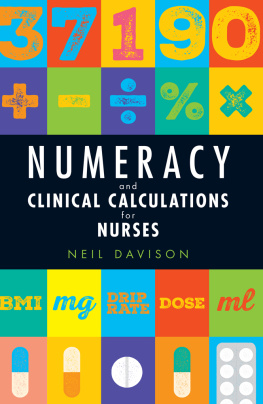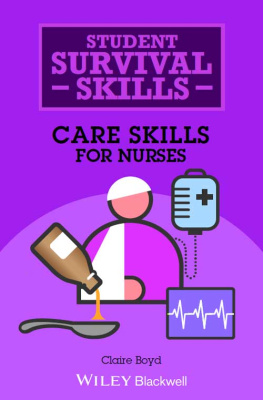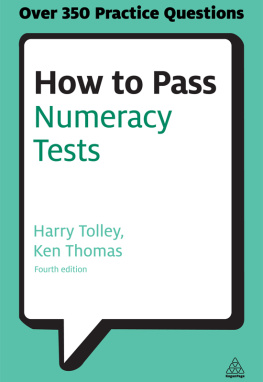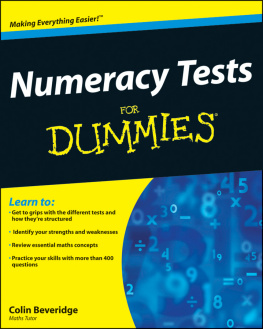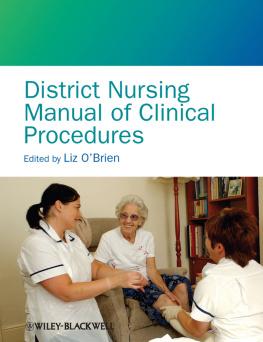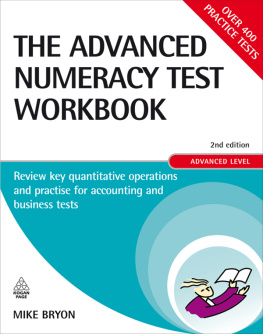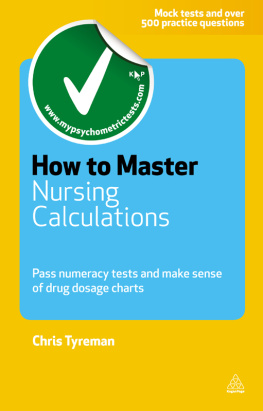ISBN: 978 1 908625 24 3
Published in 2015 by Lantern Publishing Limited
Based on Numeracy, Clinical Calculations and Basic Statistics , published 2008 by
Reflect Press Ltd (ISBN 9781906052072)
Lantern Publishing Limited, The Old Hayloft, Vantage Business Park, Bloxham Rd, Banbury, OX16 9UX, UK
www.lanternpublishing.com
2015, Neil Davison
The right of Neil Davison to be identified as the author of this work has been asserted by him in accordance with the Copyright, Designs and Patents Act 1988.
www.cla.co.uk
British Library Cataloguing in Publication Data
A catalogue record for this book is available from the British Library
The authors and publisher have made every attempt to ensure the content of this book is up to date and accurate. However, healthcare knowledge and information is changing all the time so the reader is advised to double-check any information in this text on drug usage, treatment procedures, the use of equipment, etc. to confirm that it complies with the latest safety recommendations, standards of practice and legislation, as well as local Trust policies and procedures. Students are advised to check with their tutor and/or mentor before carrying out any of the procedures in this textbook.
Typeset by Medlar Publishing Solutions Pvt Ltd, India
Cover design by Andrew Magee Design Ltd
Printed in the UK
Distributed by NBN International, 10 Thornbury Rd, Plymouth, PL6 7PP, UK
CONTENTS
Drug and clinical calculations are a significant part of modern nursing practice but performing them can cause unnecessary anxiety in many nurses.
This drug calculation book is written for student nurses at the start of their career and registered nurses who need a refresher. It is influenced by many years of teaching numeracy and drug calculation skills to undergraduate nurses in the classroom and practice setting, preparing them for online and traditional examinations and ultimately registration with the NMC.
The book aims to increase the readers skills and confidence in calculating drug doses, whether in preparation for clinical practice, drug calculation exams or as part of professional updating. This is achieved by an initial self-assessment of numeracy skills, followed by practical examples that explore the key principles, techniques and formulae needed to accurately calculate drug dosages. There are many opportunities to assess your progress throughout the book and comprehensive summary tests in the final chapter.
Neil Davison
October 2014
There are various ways to use this book:
If you are a student nurse or have returned to nursing after a career break and want a comprehensive understanding of drug and clinical calculations used in nursing, then read the book cover to cover.
If you are confident in your basic numeracy skills but want to learn how to apply these to the clinical setting, concentrate on Chapters 3 to . These will equip you with information about the SI system used in healthcare, how to calculate drug doses and the use of numbers and calculations in other areas of clinical practice like nutrition and fluid balance. Chapter 6 contains several tests so you can check your knowledge and understanding.
If you are an experienced nurse and have changed career directions and are unsure whether your current knowledge of drug and clinical calculations is up to scratch, then focus your study on Chapters 3 , and . This will allow you to revise the SI system and practise calculating drug doses and other clinical calculations.
If you are confident in your basic numeracy skills but want to gain more practice of drug calculations then concentrate your efforts on Chapters 3 , and . These focus mainly on drugs, the units of measurement and calculating correct doses.
If you are revising for a drug calculation exam, focus on Chapters 3 , and . These chapters explain the SI system and the fundamentals of calculating drug doses as well as providing many clinically related practice calculations.
The publishers would like to thank the following lecturers and a selection of their students for reviewing the Back to Basics chapter of this book and providing very useful comments that have informed the final version:
Maureen Crowley, University of the West of Scotland
David Maynard, Birmingham City University
Caroline Ridley, Manchester Metropolitan University
Maggie Roberts, University of Nottingham
Thanks also to Judy Waterlow for permission to reproduce the Waterlow chart (www.judy-waterlow.co.uk).
The Malnutrition Universal Screening Tool (MUST) is reproduced with the kind permission of BAPEN (British Association for Parenteral and Enteral Nutrition). For further information on MUST see www.bapen.org.uk.
NUMERACY AND CALCULATION
SKILLS IN THE CLINICAL ENVIRONMENT
- concentrates on why you need calculation and numeracy skills
- considers common sources of drug and calculation errors
- identifies the various opportunities available to help you learn (or re-learn) the necessary calculation skills.
- has a self-assessment test at the end, so that you can identify your strengths and diagnose your weaknesses.
1.1 Why you need to know about numbers and calculations
As a nurse, you will be required to deal with numbers and perform basic calculations every day, for example:

